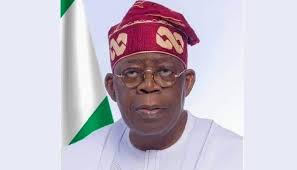President Bola Tinubu’s 48 list of likely number of persons to constitute his cabinet is remarkably low on women’s representation against his campaign promises.
The list has Dr. Betta Edu, Barr Uju-Ken Ohaneye, Hon. Nkiru Onyeojiocha, Hon. Ekperipe Ekpo, Dr. Doris Aniche Uzoka, Hannatu Musawa, Stella Erhuvwuoghene Okotete, Lola Ade-John, and Mairiga Mahmoud.
In his campaign trail, before the 2023 presidential election, president Tinubu clearly stated the need to have more women representation in government and promised to make ample room for women’s participation in his government, clearly he has reneged on his promise by availing a miserly 20percent of his ministerial slots for the women folks.
By allocating a paltry 20 percent of the cabinet position to women, President Tinubu did not only fail to keep his campaign promise, but he also failed to comply with the National Gender Policy, NGP 2006, which reserved a 35percent Affirmative Action in Nigeria. The policy demands that 35percent of public office positions be reserved for women.
In the 2023 general elections, records show that 380 women contested for Senate and House of Representative seats but only 17 were successful. With such a low number of women in the legislative arms, the onus was on President Tinubu to bridge this gap by including more women in his cabinet as promised during his campaigns.
However, those hope appeared to have been dashed given that Tinubu was nowhere close to having the required number of women in his cabinet.
Aside the issue of gender disparities, many have criticised the president for proposing to have a bloated cabinet of 48 ministers. This is the highest in the country since the country’s return to democracy in 1999.
This record high does not sit well with Nigerians, especially at a time when the citizens are having to bare the hardship that comes with the new government’s policies such as the removal of subsidy on the premium motor spirit as well as the floatation of the naira.
A cursory look at the ministerial list shows that of the 48 ministerial nominees, the northern region has a total of 26 nominees while the southern region has 22 nominees that is a percentile ratio of 54:46. This can be said to be a fair balance given the demographic peculiarities of the two regions.
However, breaking down the list into the six geopolitical zones brings to the realization that the southeast zone has the least representation with 5 ministerial nominees, which is the constitutional minimum required of one per state given the zone has 5 states.
The northwestern zone has the most nominees with 10 candidates from the zone, this is closely followed by the southwest with 9 nominees. This clearly shows that the president is rewarding loyalty, given that these were the two regions where he got the highest votes in the election that brought him to office.
President Tinubu must not tow the path of his predecessor who seemed to have been on a revenge mission to the southeast, especially with his infamous allusion to the “97/5 percent” votes he got from the region, and as he promised, throughout his 8-year tenure whereby the zone was alienated from key government programs, a decision that has led to further division in the nation and seen a resurgent of pro-Biafra secession agitations.
Despite the identified gaps in the ministerial list, we hope that going forward, the president will be deliberate in filling up all areas where he appears to be lacking by making space for more women in his team should there be a need to replace underperforming ministers and also in areas of appointments into other key government agencies and parastatals.
We must however commend the president for making room for more youths in his cabinets on a scale that has not been since the days of former President Obasanjo.
The president must, however, make concerted effort to unite all regions of the country by not appearing to favor only zones where he got substantial votes in the last election but be seen to treat all regions fair and equally.



